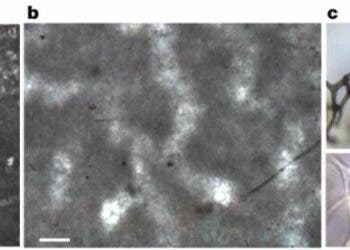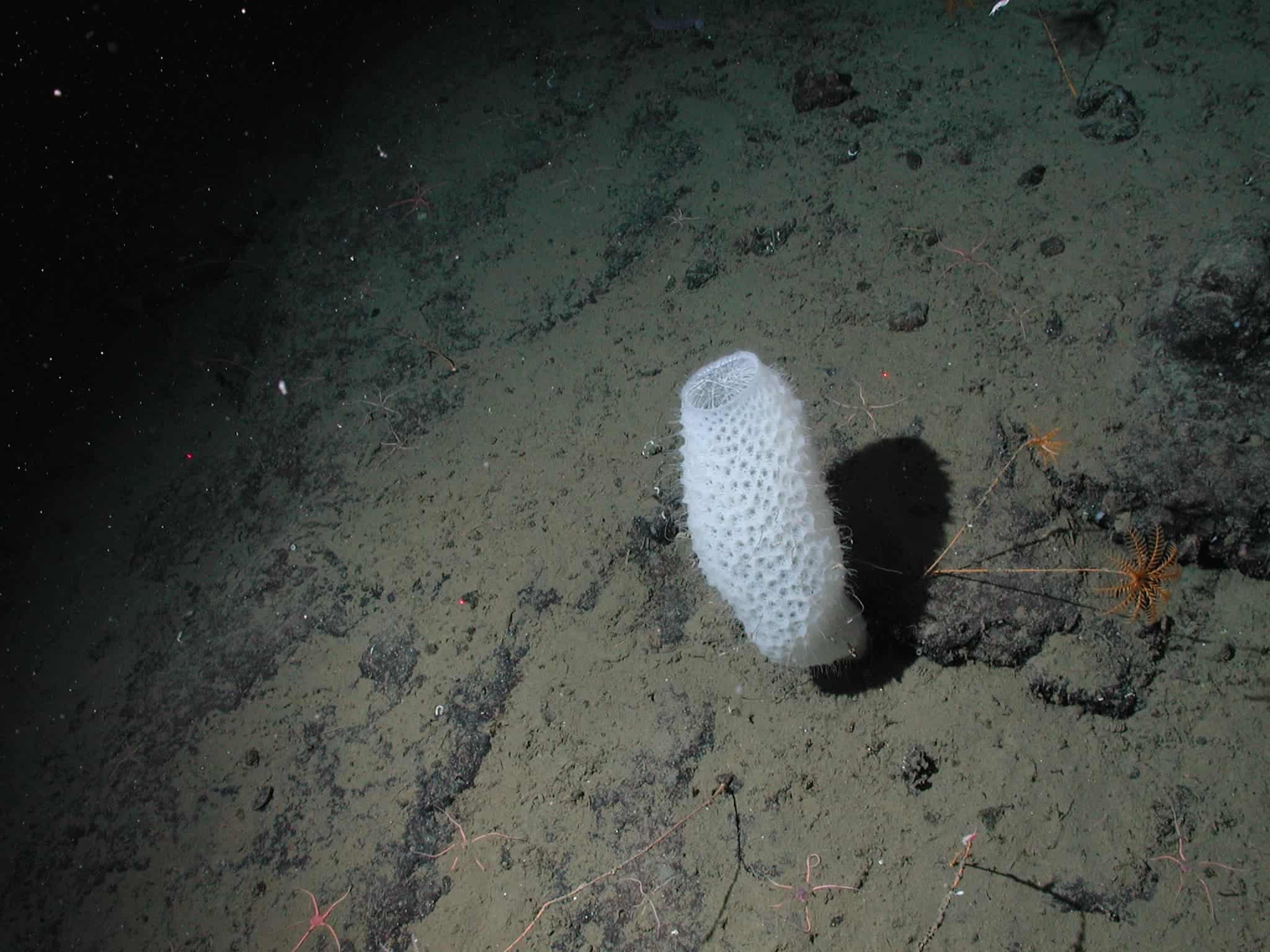Before life exploded in the Cambrian 542 million years ago, Earth’s inhabitants were generally single-celled simple organisms. But a new study from MIT found that multi-cellular organisms may have evolved before the Cambrian Explosion; according to their research, the first animal was a simple sea sponge over 640 million years old.

The new genetic analysis suggests that a sea sponge was the source for an unusual molecule found in rocks that are 640 million years old. These rocks significantly predate the Cambrian explosion, the relatively short event during which most of major animal phyla appeared, indicating that the sponge emerged much before this event.
“We brought together paleontological and genetic evidence to make a pretty strong case that this really is a molecular fossil of sponges,” says David Gold, a postdoc in MIT’s Department of Earth, Atmospheric and Planetary Sciences (EAPS). “This is some of the oldest evidence for animal life.”
Before things got wild
The fossil record abounds with examples from the Cambrian Explosion. Paleontologists believe they have a fairly good idea about what happened then, even though it was over 500 million years ago. However, fossils from before that time are much rarer, making it difficult to understand how the evolutionary tree developed. Summons’ lab has been looking for the answer in molecular fossils – large amounts of unusual molecules conserved in the fossil record.
“There’s a feeling that animals should be much older than the Cambrian, because a lot of animals are showing up at the same time, but fossil evidence for animals before that has been contentious,” Gold says. “So people are interested in the idea that some of these biomarkers and chemicals, molecules left behind, might help resolve these debates.”
The molecule they focused on is 24-isopropylcholestane, or 24-ipc for short — a modified version of cholesterol. In 1994, Summons was part of a team that found large quantities of 24-ipc in Cambrian and slightly older rocks. They speculated that sponges or their ancestors might be the source, but had no confirmation. In 2009, a team led by University of California at Riverside Professor Gordon Love, then a postdoc in Summons’ lab, continued the study and confirmed the presence of 24-ipc in 640-million-year-old rock samples, indicating the oldest evidence for animal life. It’s a fine example of a line of research that connects MIT researchers over 20 years.
“This research topic has a 20-plus-year history intimately connected to MIT scientists,” Summons notes. “Now, in 2016 David Gold has been able to apply his skills and the new tools of the genomic era, to add a further layer of evidence supporting the ‘sponge biomarker hypothesis.’”
However, the problem with looking at molecular fossils instead of “proper” fossils is that we don’t know anything about how these animals looked like – because we can’t actually see them. Were they anything like today’s sponges? How and why did they emerge 100 million years before the big Cambrian explosion? Those are still questions to be answered.
“This brings up all these new questions: What did these organisms look like? What was the environment like? And why is there this big gap in the fossil record?” Gold says. “This goes to show how much we still don’t know about early animal life, how many discoveries there are left, and how useful, when done properly, these molecular fossils can be to help fill in those gaps.”






